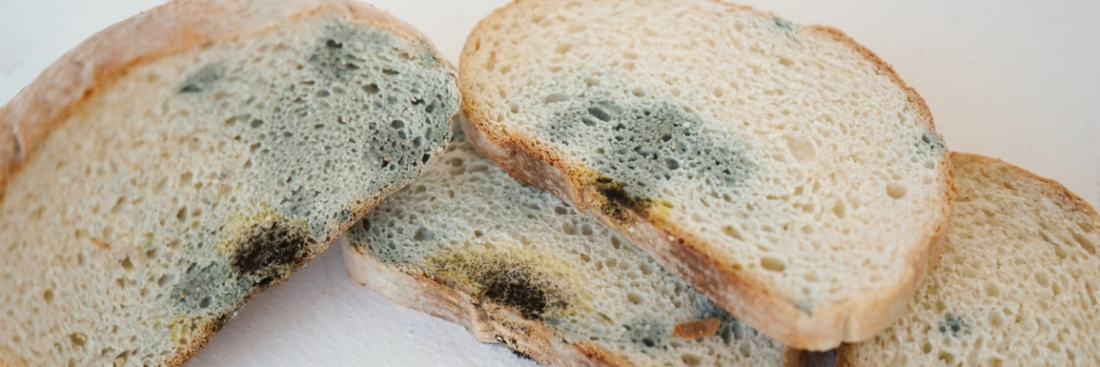Bread is a staple in many households, but it can spoil quickly if not stored correctly, leading to mold growth and wasted food. Knowing how to properly store bread in different types of bags can extend its freshness and keep it mold-free for longer. This guide will explore the best practices for using various bread bags—such as cloth, plastic, and paper—to help you preserve your bread’s quality.
- Bread Bags Introduction: Types, Materials, and Their Benefits
- Why Linen Bread Bags Are Used And Their Benefits?
- Can Bread Bags Be Recycled?
- Reusable Bread Bags: Types, Benefits, Tips for Using and Caring
Why Does Bread Mold?
Before diving into storage methods, it's helpful to understand why bread molds. Mold thrives in warm, moist environments, feeding off the nutrients in bread. Typically, mold spores in the air land on the bread, and if the conditions are right, they begin to grow. Storing bread in an improper environment can hasten mold growth, leading to spoilage.

Common Causes of Bread Mold:
- Humidity: High moisture levels promote mold growth.
- Warm temperatures: Mold grows best in temperatures between 77°F and 86°F (25°C to 30°C).
- Limited airflow: Trapping moisture and air inside the storage bag creates a breeding ground for mold.
With these factors in mind, you can better prevent mold by controlling the conditions in which bread is stored.
The Best Bread Bag Materials to Prevent Mold
Different types of bread bags have varying levels of breathability and moisture retention. Let’s look at how each type affects bread freshness and how to optimize storage.
Cloth Bread Bags
Cloth bags, usually made from cotton or linen, are becoming increasingly popular for storing bread. They offer the advantage of breathability, allowing moisture to escape rather than being trapped inside the bag. This helps reduce the chance of mold while keeping the crust crisp.
- Best For: Artisan loaves with hard crusts like sourdough and baguettes.
- How It Works: Cloth bags prevent condensation from forming around the bread, which makes them ideal for maintaining freshness in cooler, dry environments.
- Tip: Avoid storing cloth-bagged bread in overly warm or humid locations, as the bread may dry out too quickly. Keep the bag in a cool, dry place like a bread box.

Plastic Bread Bags
Plastic bags are often used because they are excellent at trapping moisture, which helps keep the bread soft. However, the same moisture retention can encourage mold growth if not managed carefully.
- Best For: Soft breads like sandwich loaves and brioche.
- How It Works: Plastic traps moisture inside the bag, keeping the bread soft but also making it more prone to mold.
- Tip: To reduce the risk of mold, store plastic-bagged bread in the refrigerator, especially in warmer climates. Make sure the bread is completely cooled before sealing it in the bag, as warmth can cause condensation.
Paper Bread Bags
Paper bags are commonly used by bakeries for their breathability. They allow moisture to escape, preventing mold, but they can also cause the bread to become stale more quickly.
- Best For: Fresh, crusty bread you plan to eat within a day or two.
- How It Works: Paper bags allow for airflow, keeping the bread dry and the crust crisp but don’t retain moisture well, so bread can dry out quickly.
- Tip: If you want to store bread in a paper bag for longer periods, consider freezing it after a day or two to prevent staleness.

General Tips to Prevent Bread Mold
Regardless of the type of bag you use, certain storage practices can greatly reduce the likelihood of mold growth. Follow these tips to keep your bread fresh for as long as possible.
Store Bread in a Cool, Dry Place
Bread should be kept in a cool, dry environment to prevent mold. Avoid leaving bread in a warm or humid kitchen, as these conditions speed up mold growth. A bread box is a good option because it allows for some airflow while protecting the bread from excess humidity.
Avoid: Sunlight, ovens, and other warm spots in your kitchen.

Freeze Bread for Long-Term Storage
Freezing is one of the most effective ways to prevent mold. If you know you won’t finish the bread within a few days, slice it and freeze the portions you won’t immediately eat. Freezing stops mold growth and preserves the bread’s texture.
Tip: Use freezer-safe plastic bags or wrap bread in aluminum foil before placing it in the freezer.
Let Bread Cool Completely Before Storing
Warm bread releases moisture, which can get trapped in the bag and create the perfect environment for mold. Make sure the bread has completely cooled to room temperature before putting it in any type of bag.
Tip: Place the bread on a wire rack after baking to allow air circulation and faster cooling.
Use Vinegar or Lemon to Clean Your Bread Box
If you use a bread box for storage, mold spores can build up inside over time. To prevent cross-contamination, clean your bread box regularly with vinegar or lemon juice, both of which are natural mold inhibitors.
Tip: Wipe down the interior of the bread box every few weeks to keep it mold-free.
Check Humidity Levels
Bread stored in humid environments is much more likely to mold quickly. If you live in a particularly humid area, consider using a dehumidifier in your kitchen or keeping bread in the refrigerator to slow mold growth.
Tip: Alternatively, add a few grains of uncooked rice inside the bread bag (especially in cloth or paper bags) to absorb excess moisture.
Mold Prevention for Specific Bread Types
- Artisan Bread (Sourdough, Baguettes): These types of bread do well in cloth or paper bags. For longer storage, freeze the bread to maintain freshness.
- Soft Bread (White, Whole Wheat, Brioche): Plastic bags are suitable for soft bread, but to prevent mold, refrigerate or freeze if you don’t plan to eat it within 3-4 days.
Conclusion
Choosing the right bread bag and following proper storage techniques can significantly extend the life of your bread and prevent mold. Cloth bags are ideal for crusty breads, while plastic bags are better for soft loaves. Paper bags work for short-term storage but are best used if you plan to eat the bread quickly.
By storing your bread in a cool, dry place, ensuring it’s fully cooled before storing, and using the freezer when necessary, you can keep your bread mold-free for longer. Investing in proper storage materials and following these tips will help you enjoy fresh bread for days to come.









